The Physical Imaging feature uses volume shadow copy service (VSS) to quiesce the system on backup. All VSS writers are involved in this process. Ensure the writers are in a correct state before running a backup.
Creating Physical Imaging Rapid Recovery Backups
To create a Physical Imaging Rapid Recovery backup, perform the following steps.
- Navigate to the Computer page. See Navigating to the Computer Page for instructions.
The Computer page is displayed.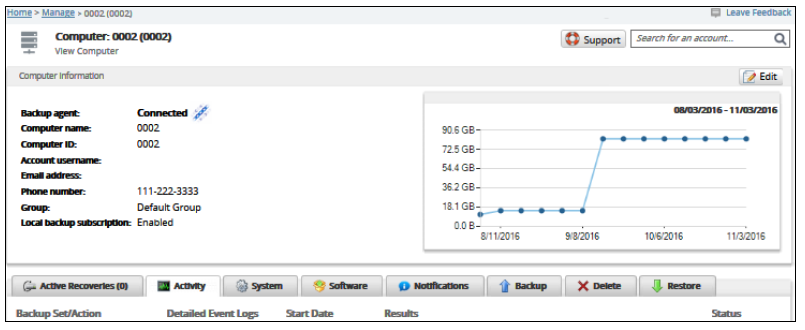
- Click the Backup tab.
The Backup Selections page is displayed.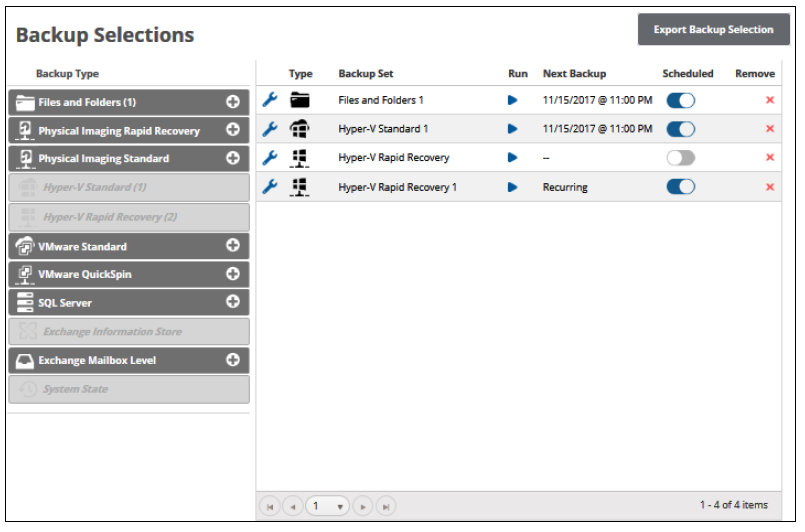
- In the Backup Type pane, click Physical Imaging Rapid Recovery.
The Select page is displayed.
- Click the Backup Name to provide a new name for the backup set or accept the default. See Changing Backup Set Names.
- At the Select Storage Location Path field, type or browse to the destination of the backup. See Browsing to a Folder.
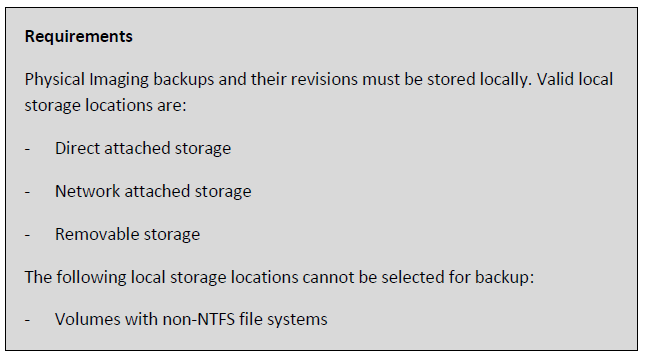
Important: Because you are backing up the full volume, ensure that you have enough local storage space for a full backup of each selected volume (it should be roughly equal to the used size of the volume) and any incremental changes. - In the Current Selection pane, select the volumes you would like to back up.
Clicking the arrow at the right of the items displays more volumes.
at the right of the items displays more volumes.
The selection is displayed in the far-right pane. Click the remove icon to remove any selections.
to remove any selections.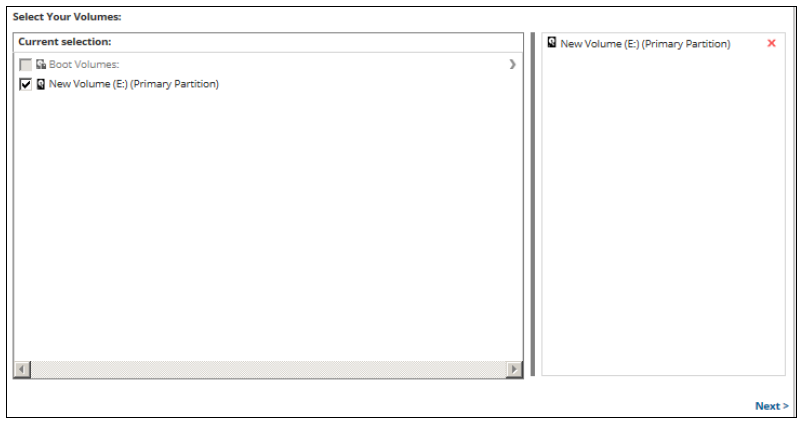

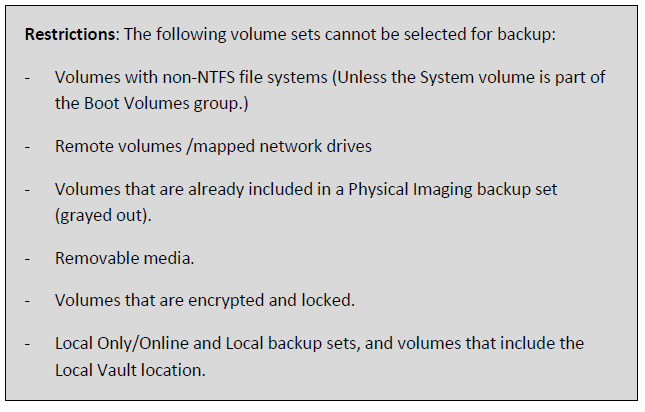
Notes:- The boot volumes group allows easy selection of any volume required to perform a restore of the physical system as a functional virtual machine or as VHD/X.
- Hovering over an available selection displays its capacity and spaced used, as shown below.


- Hovering over an unavailable volume, displays its status, as shown below.

- You cannot select removable media for backup. If attempted, the following error message is displayed.
- After selecting the volumes/revisions, click Next.
- The Schedule page is displayed.
- Accept or edit the default schedule. See Adding a New Daily or Weekly Schedule for more information.
- Notes:
- • A once daily backup is the default schedule for a Physical Imaging Rapid Recovery backup set.
- • Multiple weekly schedules are permitted (if they do not overlap).
- • Hourly and daily recurrences cannot be mixed with weekly recurrences
- • Only one daily or hourly schedule can be configured.
- After setting the schedule, click Next.
- The Retention page is displayed.
- Note: The default backup runs 7 days a week, retaining 7 versions of the backup.
- 10. Select the number of versions you wish to archive, and then click Next.
- The Advanced page is displayed.
- Requirement: You must specify a temporary folder located on a disk with enough space.
- At the Temporary Folder field, accept the default, type a new path, or click the Browse button to locate the temporary folder that is used in backing up. See Browsing to a Folder.
- 12. After selecting the destination of the restore, click Next.
- The Summary page is displayed.
- 13. After reviewing your selections, click the Create Backup Set button.
- The schedule backup is displayed on the Backup Selections page.
Creating Physical Imaging Standard Backup Sets
To create a Physical Imaging Standard backup set, perform the following steps.
- Navigate to the Computer page.
The Computer page is displayed.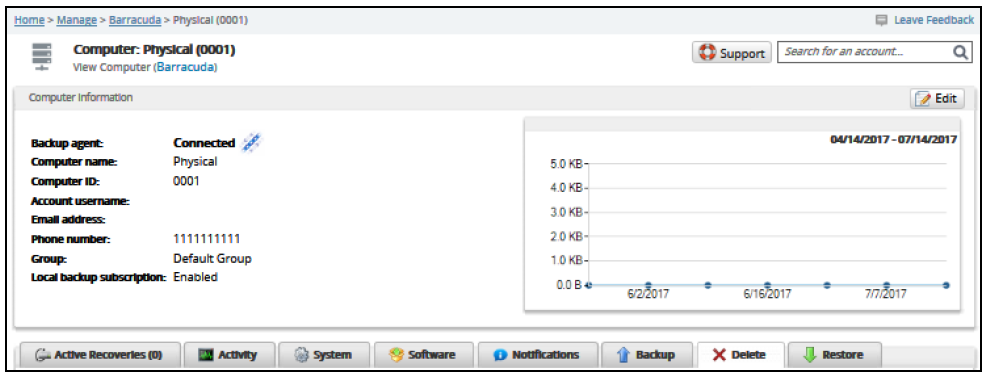
- Click the Backup tab.
The Backup Selections page is displayed.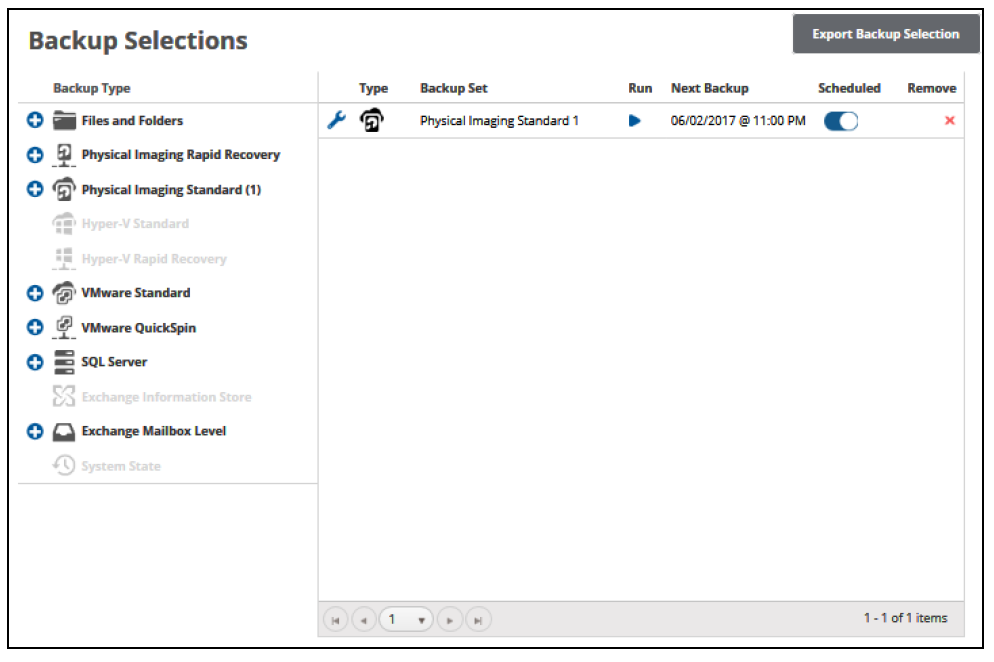
- In the Backup Type pane, click the select icon beside Physical Imaging Standard to create the backup.
The Select page is displayed.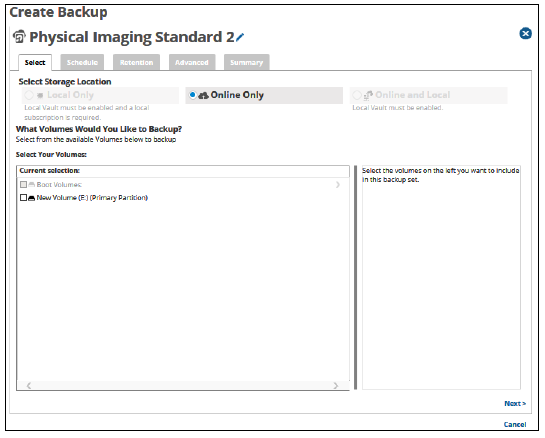
- Click the Backup Name to provide a new name for your backup set, or accept the default.
- At the Select Storage Location section, click one of the following options.
Note: This procedure applies to all options. See Backup Options for more information.- Local Only (Local Vault must be enabled and a local subscription is required. Data is not backed up to the cloud.)
- Online Only (An enabled Local Vault disables this option.)
- Online and Local (Local Vault must be enabled.)
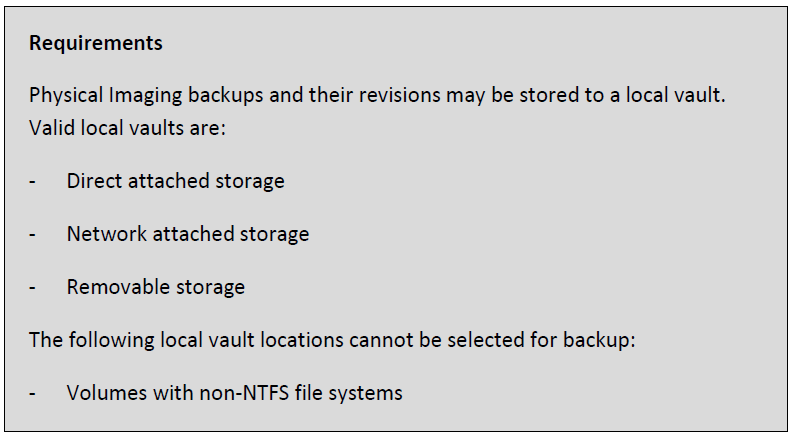
Important: Because you are backing up the full volume, ensure that you have enough local storage space for a full backup of each selected volume (it should be roughly equal to the used size of the volume) and any incremental changes. - In the Current Selection pane, select the volumes you would like to back up.
Clicking the arrow at the right of the items displays more volumes.
at the right of the items displays more volumes.
The selection is displayed in the far right pane. Click the remove icon to remove any selections.
icon to remove any selections.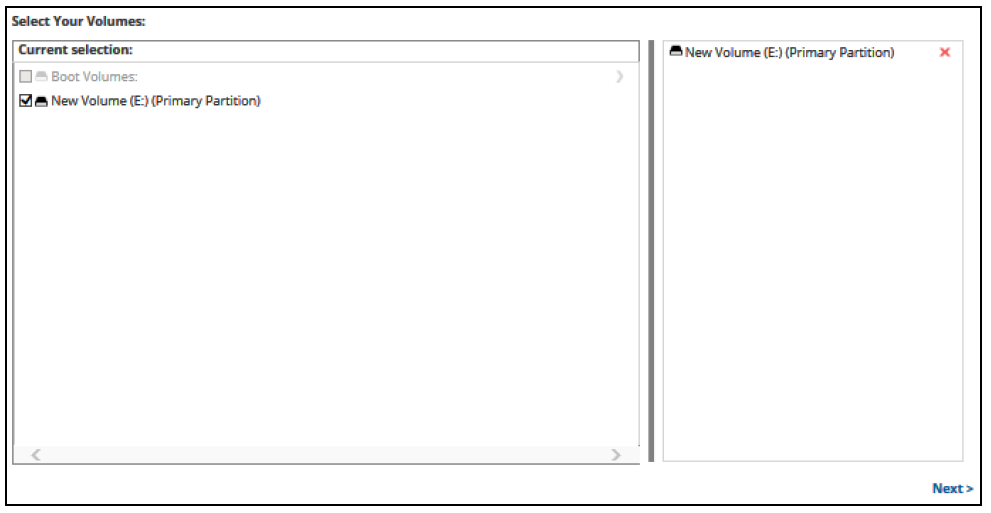
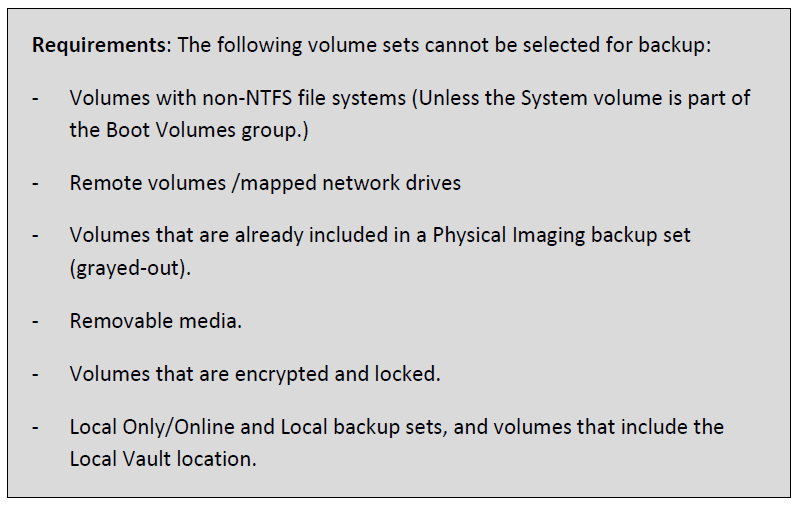
Notes:- The boot volumes group allows easy selection of any volume required to perform a restore of the physical system as a functional virtual machine or as VHD/X.
- Hovering over an available selection displays its capacity and spaced used, as shown below.

- Hovering over an unavailable volume, displays its status, as shown below.

This hover message displays because the volume is included in another backup set.- You cannot select removable media for backup. If attempted, the following error message is displayed.

- After selecting the volumes/revisions, click Next.
The Schedule page is displayed.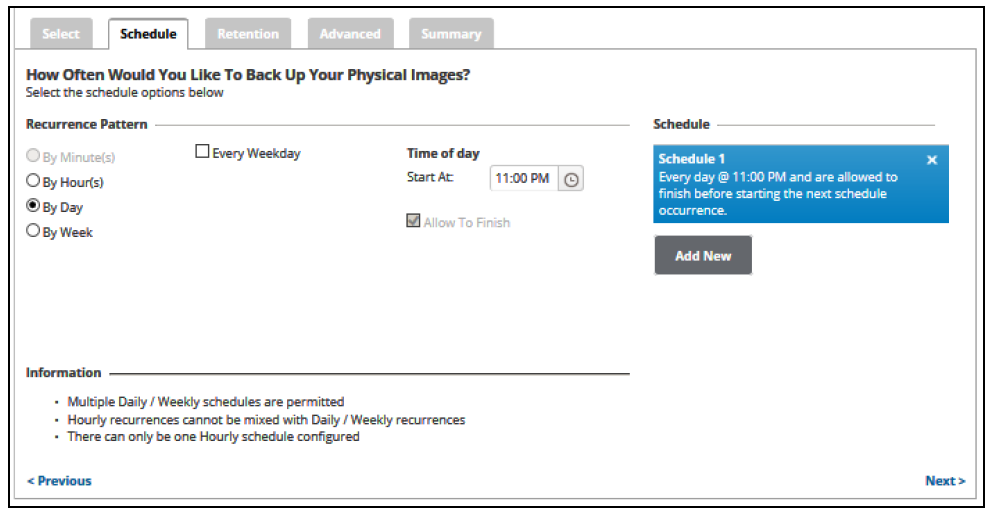
- Accept or edit the default schedule.
Notes:- A once daily backup is the default schedule for a Physical Imaging Standard backup set.
- Multiple weekly schedules are permitted (as long as they do not overlap).
- Hourly recurrences cannot be mixed with daily/weekly recurrences
- Only one hourly schedule can be configured.
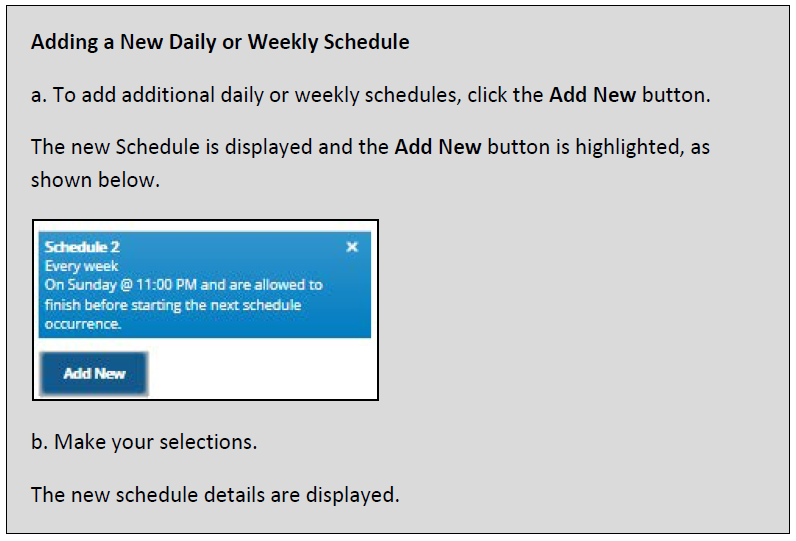
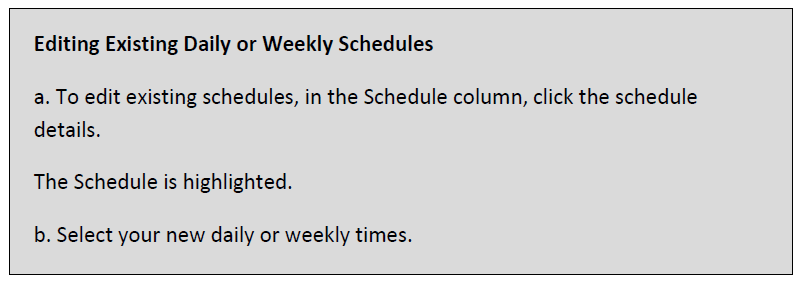
Your schedule is displayed in the Schedule column. Click the remove icon to delete schedule. - After setting the schedule, click Next.
The Retention page is displayed.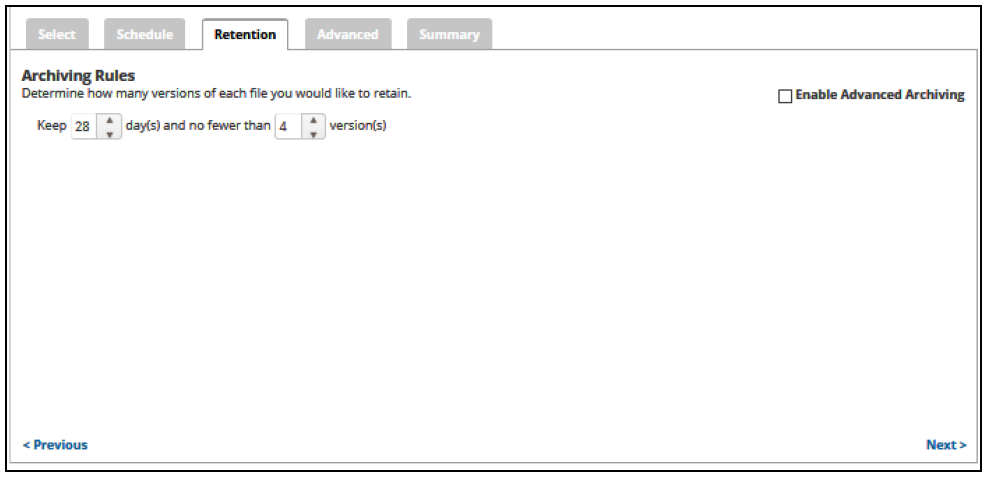
- Select the number of versions you wish to archive and the number of days to retain.
Note: The default retains 4 recoverable versions of backups for 28 days. - Optionally, select the Enable Advanced Archiving check box.
The Advanced Archiving fields are displayed.
Example: The setting of a daily backup kept for 30 days and no fewer than 10 versions mean that 30 versions are kept. However, a setting of once a week means that after 10 weeks, 10 versions are kept. - Make your selections, click Save Rule, and then click Next.
The Advanced page is displayed.
- At the Force Full Backups section, specify how often full backups are performed after incremental backups.
Note: The range is from 1 to 60 backups. The default is every 21st incremental backup. - At the Copy Mode section, select or clear the Take Copy Mode Backups check box, and then click Next.
Note: The Take Copy Mode Backups checkbox is selected by default.
Copy Mode backups do not automatically truncate Exchange or SQL transaction logs.
If you are taking a physical image of an Exchange or SQL server and want the Physical Imaging Standard backup set to truncate the logs, disable Copy Mode.
If you already are backing up Exchange or SQL using another method (such as through the ECHOplatform Backup Agent or directly via Exchange or SQL), then keep Copy Mode enabled.
The Summary page is displayed.
- After reviewing your selections, click the Create Backup Set button.
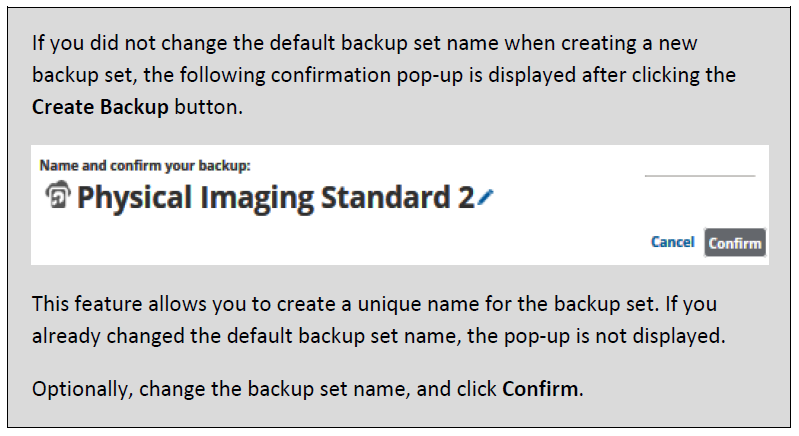
Your scheduled backup is displayed on the Backup Selections page.
How-To Video
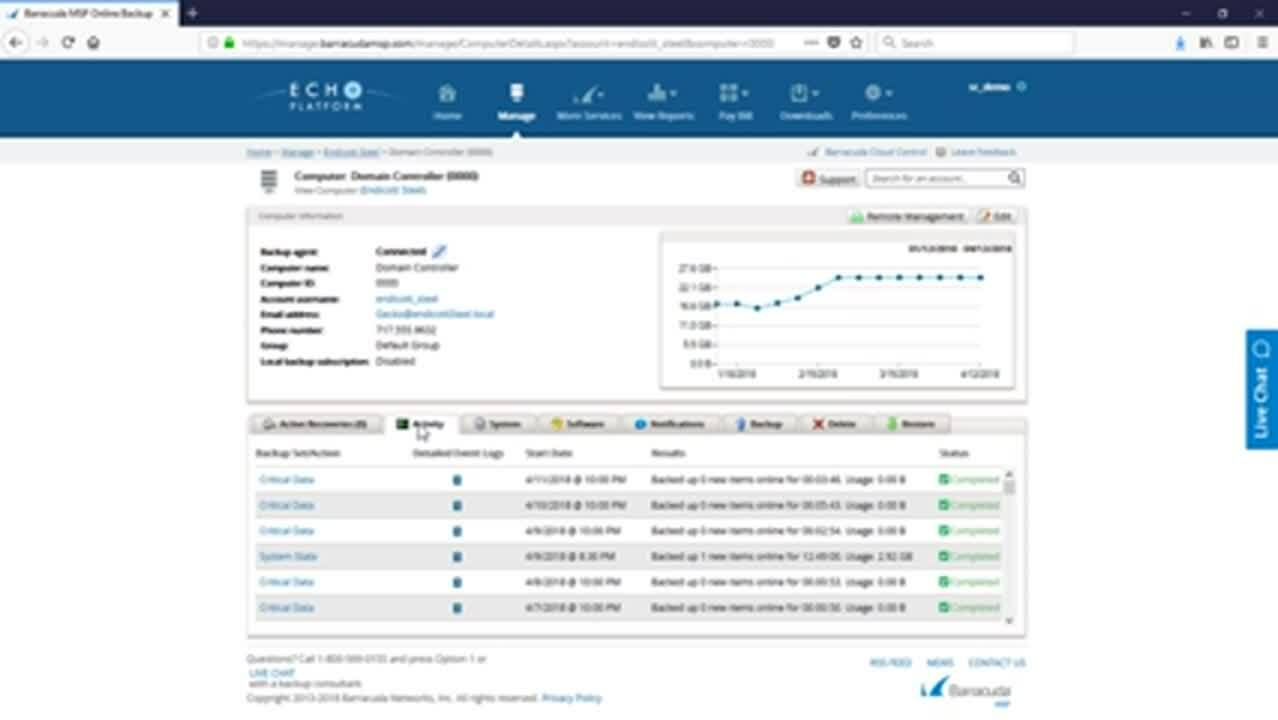

Videolink:
https://campus.barracuda.com/